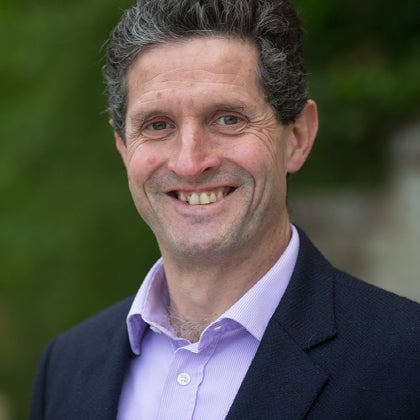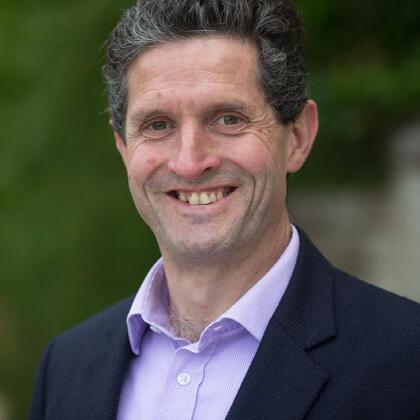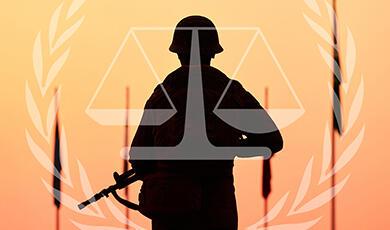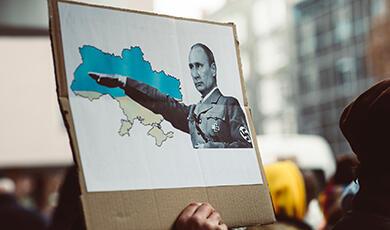Why Net Zero?
Share
- Details
- Text
- Audio
- Downloads
- Extra Reading
What will it take to stop global warming and how long have we got?
These are huge questions for humanity, nature, society and geopolitics. Understanding our changing weather and its impacts is one of the greatest scientific challenges of our time. But understanding how to stop changing it turns out to be surprisingly simple. You don’t need to be a scientist or policy wonk to appreciate what it will take to stop global warming. Focusing on fundamentals has surprising implications.
Download Text
Why Net Zero
Professor Myles Allen
11 October 2022
Why Net Zero?
In a nutshell, because that is what it will take to stop global warming. Global warming is overwhelmingly determined by the accumulation of carbon dioxide in the atmosphere, so to halt global warming we need to reduce ongoing carbon dioxide emissions, primarily from the burning of fossil fuels, to net zero. And the temperature we end up at is primarily determined by the total amount of carbon dioxide we release into the atmosphere before emissions reach net zero.
That has been considered reasonably obvious and uncontroversial in the scientific community for around 15 years – this lecture series will explain why, as well as trying to explain why climate researchers took remarkably long before then to spot something that was, with hindsight, blindingly obvious. But as more and more countries and companies around the world have committed to net zero, it seems to have become a more and more complicated and slippery concept, much to my frustration as a physicist.
Perhaps this was inevitable – net zero is not the first example of the world deciding something is a good idea before deciding exactly what it means. But the result, of course, is a scramble to redefine net zero in all kinds of different ways to suit all kinds of different interests.
The UK, along with most other countries, is committed to Net Zero by 2050. Or are we? Liz Truss has promised to come up with “better ways to deliver our net zero targets”. Does that mean faster and fairer ways, or slower and slipperier ways?
I was one of a small group of scientists who were working on what could be said, with confidence, in the second half of the noughties about what it would take to stop global warming. This lecture series will explain how the scientific community understood net zero back then, and still understands it today, and why it called for a different way of thinking scientifically about the relationship between carbon dioxide emissions and global temperatures, moving on from the concept of a “safe level” of greenhouse gas concentrations that had dominated climate science and policy for a quarter-century prior to 2009.
Unfortunately, much of the climate policy community is still wedded to pre-2009 thinking, focussed entirely on how we can reduce emissions in the short term, rather than the question of how we limit cumulative emissions overall. Reducing the flow of carbon dioxide into the atmosphere slows the ongoing rate of warming, but to limit peak warming, we need to limit the total amount of carbon dioxide we release. This matters, because critical technologies that we will need to stop global warming are being neglected because all the focus is on what we need to do now to slow it down.
Imagine each of these lumps of coal represents half a trillion tonnes of carbon which, if burned and emitted as carbon dioxide to the atmosphere, will heat up the planet by 1°C. Back in the late 2000s, when we published the net zero papers, the world had just burned through the first half-trillion tonnes – which took 250 years.
15 years later, we have already burned through one third of the next half-trillion tonnes which, if we burn it all and released that carbon dioxide to the atmosphere, will take us to 2°C. Already, countries, communities and ecosystems are feeling the impacts of 1°C of warming and, simply because our world is adapted to a pre-industrial climate, we should expect every additional degree of warming to have more impact than the last: a warming from 1°C to 2°C will, conservatively, have at least three times the impact of a warming from 0°C to 1°C. And a warming from 2°C to 3°C, five times the impact, and so on (a rule of odd numbers that goes back to Galileo).
So, in the context of these accelerating impacts, the world decided at the 21st Conference of the Parties to the UN Framework Convention on Climate Change, COP21, in Paris in 2015, reaffirmed at COP26 in Glasgow in 2021, to aim to limit warming as close as possible to 1.5°C. Yet, rumour has it, there are prominent members of the cabinet who still believe that three degrees of global warming would be quite tolerable. Which is perhaps why Egypt, the hosts of COP27 in November, have resorted to pleading with the UK government to keep taking climate change seriously.
I won’t dwell on the impacts of different levels of global warming in this lecture – that is the focus of “when net zero?” next year – but I will take it as given that, whatever we think a wealthy, temperate country like the UK might be able to “tolerate”, there will be countries around the world who are much more adversely affected that we are. These countries are likely to take a dim view of the country that, in effect, invented the large-scale burning of fossil fuels just telling them to put up with the consequences. So, my personal view is that the geophysical impacts of 3°C to 4°C of warming, which people tend to focus on, are a much less immediate threat than the geopolitical impacts of 2° to 3°C of warming.
For the sake of this lecture, I will assume that the world, and our government, remains committed to the Paris goal of limiting the increase in global temperatures above pre-industrial levels to well below 2°C, and pursuing efforts to 1.5°C. Which means we can afford to emit only half as much carbon dioxide again as we’d emitted before 2009, and we have already emitted almost one third as much again.
So, it was clear back in 2009, and even clearer now, that we will generate more carbon dioxide by burning fossil fuels than we can afford to dump into the atmosphere. This simple fact completely changed my view of the climate challenge. It wasn’t just a problem of burning this second lump slower: it was a waste disposal problem. How do we scale up safe, permanent disposal of carbon dioxide so we stop fly-tipping it into the atmosphere?
As a physicist, my job is to make things as simple as possible. Carbon exists on our planet in three spheres that are directly affected by human activity: the atmosphere; the biosphere, mostly plants and soils; and the geosphere, solid earth, rocks, sediments – and fossil fuels.
Net zero seems complicated because Life is complicated. Natural carbon flows between the atmosphere and biosphere are huge and varied, and we interfere with them in many ways: planting trees, burning them down, and arguing over whose fault it was they burned down.
The geosphere, in contrast, is quite simple. You can count the forms of carbon we extract from the geosphere on the fingers of one hand: coal, oil, gas, and limestone for cement. Natural exchanges are tiny, very precisely balanced over time, and we don’t affect them.
The total amount of carbon in all three spheres is fixed. To stop global warming, we need to stop dumping carbon dioxide into the atmosphere. And since we also can’t rely on the biosphere to mop up carbon dioxide from burning fossil fuels forever, particularly as the world warms, this means we have to staunch the net flow out of the geosphere.
This is what we call geological net zero: for every tonne of carbon dioxide generated by burning fossil fuels, one tonne must be permanently re-stored to the geosphere. Right now, the one way we restore carbon to the geosphere on any scale is capturing and compressing carbon dioxide, and injecting it as a liquid deep into the earth’s crust.
We know how to do this, and have been doing it for decades. Last year, around 40 million tonnes of carbon dioxide worldwide was restored to the geosphere in this way. But that’s dwarfed by the almost 40 billion tonnes we generated from burning fossil fuels. For every tonne of carbon dioxide we generate, we safely dispose of one kilogramme: the rest is dumped into the atmosphere.
To get to geological net zero, we need to reduce the amount we produce, and increase the amount we re-store, accounting for any leaks, until they balance. How much we reduce, versus how much we re-store, only time will tell, but two things are certain. First, even if it were possible, it would be insanely expensive to reinject 40 billion tonnes of carbon dioxide into the Earth’s crust every year. So, we have to reduce.
Second, there are many uses of fossil fuels that will remain attractive for decades, even including the cost of disposing of the carbon dioxide they generate, particularly if you own a fossil fuel reserve. So, unless we decide just to ban fossil fuels for the sake of it, which doesn’t seem very fair on countries who have only recently discovered their reserves, we have to increase the rate we restore carbon dioxide to the geosphere.
But last year, less than one third of one percent of investment in the energy transition went into permanent carbon dioxide storage.[i]
To fix this, every country or company that is serious about climate change must recognise the need for geological net zero now. And start to track progress towards it. Anyone still producing, selling or using fossil fuels should know what fraction of the carbon dioxide generated by their activities and products is being captured where it’s produced or re-captured from the atmosphere and permanently re-stored back into the Earth’s crust. Companies should be reporting this fraction to their shareholders, and countries to the UN.
We need to increase that re-stored fraction to 100% of whatever carbon dioxide we are still producing in the year of net zero. And we can do this. With technologies available today, achieving geological net zero by 2050, capturing and permanently disposing of all the carbon dioxide they generate, would add less than 60p to the cost of producing a litre of petrol, or less than 5p to the cost of delivering a kilowatt-hour of natural gas. That’s an increased production cost, phased in over the next 30 years, that is less than wholesale prices – and profits – have varied since the beginning of 2022.[ii]
So climate change is a choice. We will produce more carbon dioxide from burning fossil fuels than we can afford to emit if we are to avoid serious and irreversible harm to our planet. It is increasingly dangerous to pretend otherwise. So, the choice is between aiming for geological net zero, ramping up safe and permanent disposal of carbon dioxide now, or dumping it all into the atmosphere, suffering the consequences, and hoping our grandchildren will work out how to clean it out again.
Put it that way, I’m not sure we have a choice at all.
© Professor Myles Allen, 2022
[i] https://assets.bbhub.io/professional/sites/24/Energy-Transition-Investment-Trends-Exec-Summary-2022.pdf page 6. $2.3 out of $750 billion = 0.3%
[ii] Assuming a cost of free-air capture of $250-300 per tonne of CO2, a mid-range estimate – e.g. figure 24 of https://www.goldmansachs.com/insights/pages/gs-research/carbonomics-f/report.pdf, which at 2.4 kg CO2 per litre of petrol and 0.185 kg CO2 per kWh natural gas equals 60-70 cents / litre and 4.5-5.5 cents per kWh, which at current exchange rates is less than 60p / litre and less than 5p / kWh.
Part of:
This event was on Tue, 11 Oct 2022
Support Gresham
Gresham College has offered an outstanding education to the public free of charge for over 400 years. Today, Gresham College plays an important role in fostering a love of learning and a greater understanding of ourselves and the world around us. Your donation will help to widen our reach and to broaden our audience, allowing more people to benefit from a high-quality education from some of the brightest minds.


 Login
Login







